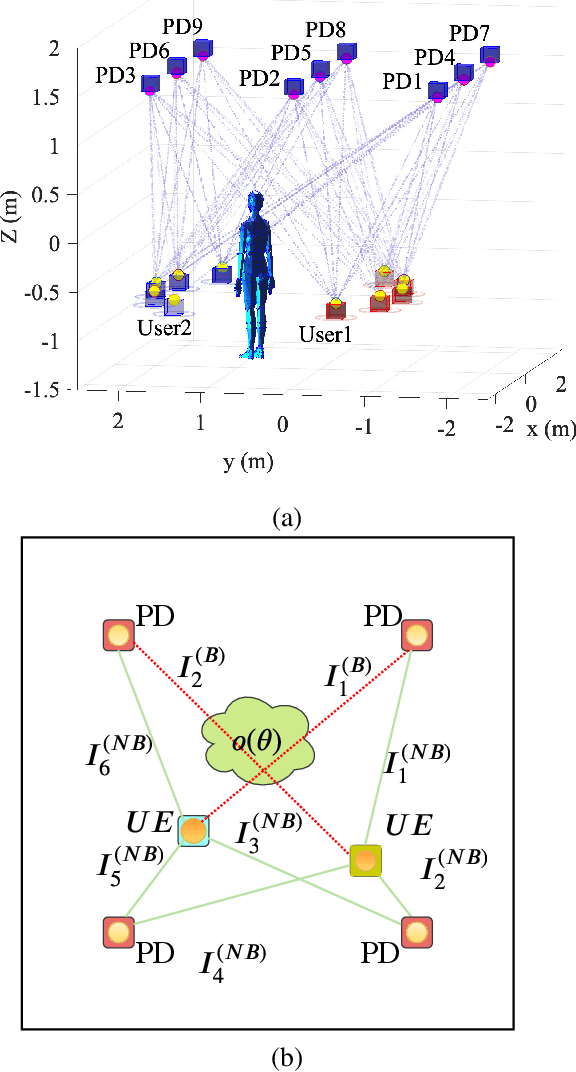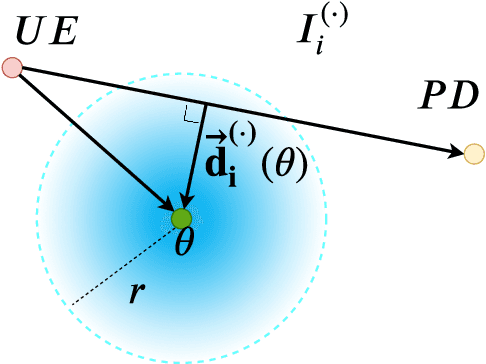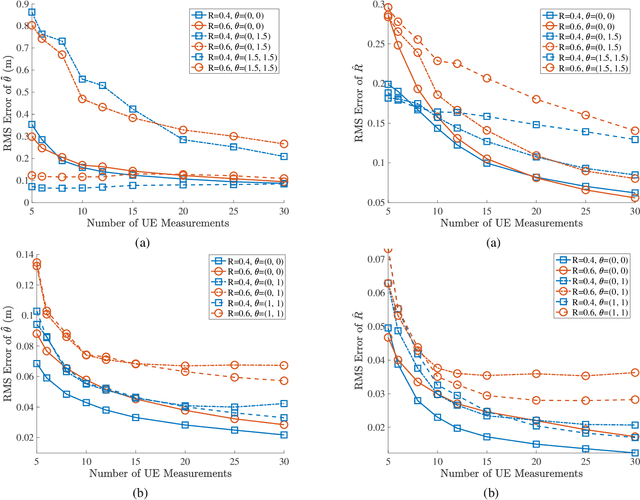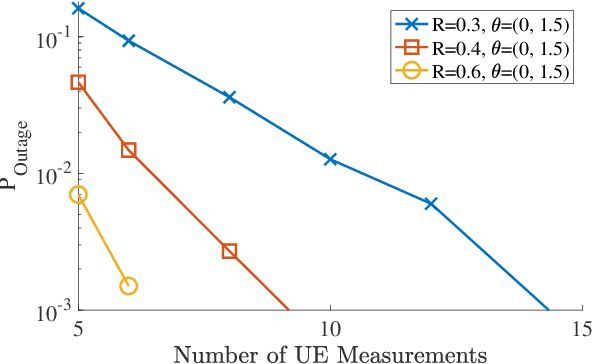Maite Brandt-Pearce
Angle diversity receiver as a key enabler for reliable ORIS-based Visible Light Communication
May 15, 2025Abstract:Visible Light Communication (VLC) offers a promising solution to satisfy the increasing demand for wireless data. However, link blockages remain a significant challenge. This paper addresses this issue by investigating the combined use of angle diversity receivers (ADRs) and optical reconfigurable intelligent surfaces (ORISs) in multiuser VLC systems. We consider ORIS elements as small movable mirrors. We demonstrate the complementarity of ADR and ORIS in mitigating link blockages, as well as the advantages of using a larger number of ORIS elements due to the increased field-of-view (FoV) at the receiver enabled by the ADR. An optimization algorithm is proposed to maximize the minimum signal-to-noise power ratio (SNR) to deploy a fair communication network. Numerical results show that integrating ADR and ORIS significantly enhances VLC communication performance, achieving an SNR gain of up to 30 dB compared to a system without ORIS, and mitigating communication outages produced by link blockages or out-of-FoV received signals. We also prove that an ADR with a single tier of photodiodes is sufficient to complement ORIS-assisted VLC.
Resource allocation exploiting reflective surfaces to minimize the outage probability in VLC
Jan 29, 2024Abstract:Visible light communication (VLC) is a technology that complements radio frequency (RF) to fulfill the ever-increasing demand for wireless data traffic. The ubiquity of light-emitting diodes (LEDs), exploited as transmitters, increases the VLC market penetration and positions it as one of the most promising technologies to alleviate the spectrum scarcity of RF. However, VLC deployment is hindered by blockage causing connectivity outages in the presence of obstacles. Recently, optical reconfigurable intelligent surfaces (ORISs) have been considered to mitigate this problem. While prior works exploit ORISs for data or secrecy rate maximization, this paper studies the optimal placement of mirrors and ORISs, and the LED power allocation, for jointly minimizing the outage probability while keeping the lighting standards. We describe an optimal outage minimization framework and present solvable heuristics. We provide extensive numerical results and show that the use of ORISs may reduce the outage probability by up to 67% with respect to a no-mirror scenario and provide a gain of hundreds of kbit/J in optical energy efficiency with respect to the presented benchmark.
Optical Channel Impulse Response-Based Localization Using An Artificial Neural Network
Nov 04, 2022Abstract:Visible light positioning has the potential to yield sub-centimeter accuracy in indoor environments, yet conventional received signal strength (RSS)-based localization algorithms cannot achieve this because their performance degrades from optical multipath reflection. However, this part of the optical received signal is deterministic due to the often static and predictable nature of the optical wireless channel. In this paper, the performance of optical channel impulse response (OCIR)-based localization is studied using an artificial neural network (ANN) to map embedded features of the OCIR to the user equipment's location. Numerical results show that OCIR-based localization outperforms conventional RSS techniques by two orders of magnitude using only two photodetectors as anchor points. The ANN technique can take advantage of multipath features in a wide range of scenarios, from using only the DC value to relying on high-resolution time sampling that can result in sub-centimeter accuracy.
Cooperative Object Detection and Parameter Estimation Using Visible Light Communications
Mar 17, 2020



Abstract:Visible light communication (VLC) systems are promising candidates for future indoor access and peer-to-peer networks. The performance of these systems, however, is vulnerable to the line of sight (LOS) link blockage due to objects inside the room. In this paper, we develop a probabilistic object detection method that takes advantage of the blockage status of the LOS links between the user devices and transceivers on the ceiling to locate those objects. The target objects are modeled as cylinders with random radii. The location and size of an object can be estimated by using a quadratic programming approach. Simulation results show that the root-mean-squared error can be less than $1$ cm and $8$ cm for estimating the center and the radius of the object, respectively.
 Add to Chrome
Add to Chrome Add to Firefox
Add to Firefox Add to Edge
Add to Edge